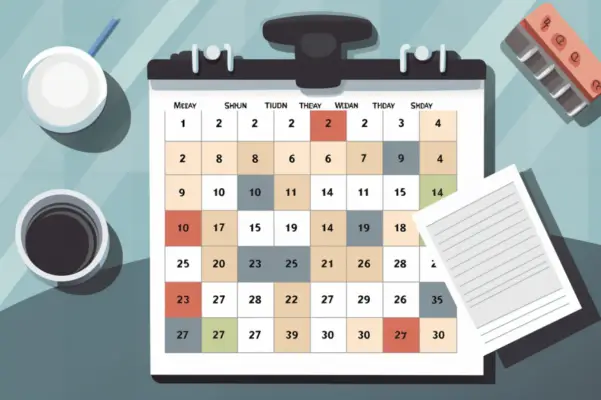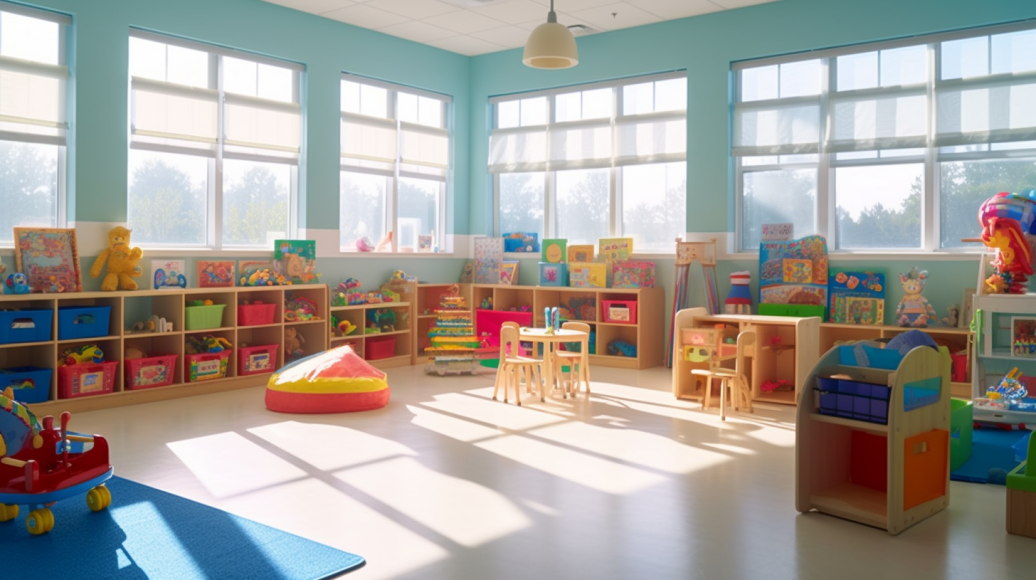Risk assessment ensures the safety and well-being of children in childcare settings. It involves identifying potential hazards, evaluating the likelihood and severity of harm, and creating a secure environment that promotes learning and growth.
Childcare providers can effectively manage risks and minimize accidents or injuries by following a systematic process.
Identifying potential hazards is an essential step in risk assessment. This involves carefully assessing the physical environment, such as playgrounds, classrooms, or sleeping areas, to identify any potential dangers like sharp objects, unstable furniture, or slippery surfaces.
Additionally, it includes recognizing potential risks related to activities and materials used in childcare settings.
After identifying these hazards, evaluating their likelihood and severity of harm is crucial. This step requires objectively considering factors such as frequency of exposure to risk, age group of children involved, developmental abilities of children, and past incidents.
The outcome is a comprehensive understanding of the level of risk associated with each hazard.
Creating a secure environment for children is another critical aspect addressed through risk assessment. This includes implementing appropriate safety measures like childproofing electrical outlets or installing safety gates to prevent access to restricted areas.
Furthermore, it entails establishing clear policies regarding supervision ratios and emergency procedures to ensure prompt response during crises.
Risk assessment also aims at promoting learning opportunities while minimizing unnecessary restrictions on exploration and growth.
Childcare providers can create stimulating environments where children thrive by finding a balance between ensuring safety and allowing age-appropriate experiences that support developmentally appropriate practices (DAP).
Risk assessment is essential for child safety in childcare. Identifying hazards, assessing their severity, and providing secure environments promote healthy development.

Importance of Risk Assessment in Child Care
The importance of risk assessment in child care lies in its ability to systematically identify potential hazards and implement preventive measures to ensure the safety and well-being of children within the facility.
Childcare providers should conduct a comprehensive risk assessment to identify potential hazards to children and take necessary measures to minimize these risks. This proactive approach can ensure the safety of children under their care.
This helps prevent accidents and injuries and promotes a safe and secure environment for children to learn, play, and grow.
One of the key benefits of risk assessment is the ability to implement effective risk management strategies. Childcare providers can identify hazards such as sharp objects, toxic substances, or unsafe playground equipment through this process.
They can then develop protocols and procedures to minimize these risks, such as establishing clear guidelines for staff supervision or implementing regular safety inspections.
Childcare facilities can prioritize children’s safety by implementing proactive measures.
Risk assessment plays a vital role in child care by identifying potential hazards and implementing preventive measures. This systematic approach allows childcare providers to effectively manage risks and create a safe environment for children’s well-being.
Identifying Potential Hazards in Child Care Settings
Identifying potential hazards in settings that cater to the well-being of young individuals is crucial for ensuring their safety and protection. In childcare settings, where children spend a significant amount of time.
It is essential to conduct thorough risk assessments to identify and mitigate any potential risks. This process involves assessing hazards that may threaten children’s safety and implementing appropriate safety measures.
The table below illustrates common potential hazards in childcare settings and corresponding safety measures:
| Potential Hazards | Safety Measures |
|---|---|
| Unsecured furniture | Anchoring furniture |
| Electrical outlets | Outlet covers |
| Small objects | Choking hazard awareness |
| Slippery floors | Non-slip mats |
Childcare providers can proactively minimize the risk of accidents or injuries by systematically evaluating potential hazards.
Regular inspections and ongoing monitoring are necessary to ensure that safety measures remain effective.
Childcare providers can create a safe environment for children to learn, play, and grow by promptly prioritizing risk assessment and addressing identified hazards.
Evaluating the Likelihood and Severity of Harm
Evaluating the likelihood and severity of harm in settings catering to young individuals is important in ensuring their safety and well-being.
Risk assessment involves identifying potential hazards and evaluating the risk level associated with each hazard. This evaluation process entails considering both the likelihood of an incident occurring and the potential severity of harm resulting from it.
When evaluating risks, childcare providers must carefully consider various factors. These may include the age and developmental stage of the children, as well as their physical abilities and limitations.
Additionally, the layout and design of the childcare facility should be assessed for potential hazards such as sharp edges, unstable furniture, or inadequate supervision areas.
Assessing harm involves determining how severe a potential injury or accident could be if it were to occur. This includes considering factors such as the extent of physical harm, emotional distress, or long-term consequences that could arise from a particular hazard.
Overall, effective risk assessment in childcare settings requires a thorough evaluation of the likelihood and severity of harm associated with identified hazards.
Childcare providers can take necessary steps to reduce risks and establish a secure environment for young individuals by following these guidelines.
Creating a Secure Environment for Children
Establishing a safe and protected environment is crucial in fostering young individuals’ emotional well-being and security. Child safety is paramount in any childcare setting, and risk management is vital in ensuring that children are kept safe from harm.
Creating a secure environment for children involves implementing various measures to minimize potential risks. This includes:
- Carefully selecting and regularly inspecting age-appropriate toys and equipment.
- Ensuring proper supervision at all times.
- Conducting thorough background checks on staff members.
- Maintaining clean and hygienic facilities.
- Having emergency plans in place.
Additionally, staff should receive comprehensive training on child safety protocols to respond to emergencies or potentially hazardous situations effectively.
Childcare providers can create a safe and secure environment for children under their care by implementing risk assessment and management strategies. This ensures that the children feel protected and secure while in their care.

Promoting Learning, Exploration, and Growth in Child Care
Encouraging a nurturing environment within childcare settings involves fostering an atmosphere that supports and cultivates young individuals’ natural curiosity, exploration, and growth.
To promote learning, exploration, and growth in child care, it is important to encourage independence and foster creativity among children. Allowing children to make choices and decisions within safe boundaries helps them develop a sense of autonomy and self-confidence.
Providing opportunities for hands-on activities, such as art projects or science experiments, allows children to explore their own interests and encourages their creativity.
Creating a stimulating environment with age-appropriate toys, books, and materials can also spark children’s imaginations and enhance their cognitive development.
Encouraging independence and creativity in childcare settings equips children with the necessary skills to learn, discover their environment, and develop into self-assured individuals.
Frequently Asked Questions
What are the legal requirements for risk assessment in childcare settings?
Legal requirements for risk assessment in childcare settings include complying with safety regulations, conducting regular assessments, identifying hazards and risks, implementing necessary control measures, documenting findings and actions, and reviewing the assessment periodically to ensure ongoing compliance.
How often should risk assessments be conducted in childcare settings?
Risk assessments should be conducted regularly in childcare settings to ensure the safety of children. The frequency of these assessments depends on factors such as the nature of activities and potential hazards present, highlighting their importance in preventing accidents and maintaining a secure environment.
What are some common challenges faced when conducting risk assessments in child care?
Common challenges faced when conducting risk assessments in child care include limited parental involvement, which can hinder the gathering of relevant information, and a lack of importance placed on training for staff members responsible for conducting assessments.
Are specific guidelines or frameworks available to assist in conducting risk assessments in childcare settings?
Yes, various risk assessment frameworks and guidelines are available to assist in conducting risk assessments in childcare settings.
These tools provide structured approaches and recommendations for identifying, evaluating, and managing risks to ensure the safety of children.
How can parents be involved in the risk assessment process in childcare settings?
Parental involvement in the risk assessment process in childcare settings is crucial for effective risk management.
Parents can contribute by sharing relevant information, participating in discussions, and providing feedback on proposed measures to ensure the safety and well-being of their children.

Conclusion
In conclusion, it is essential to carry out risk assessments in child care to ensure that the well-being and security of children are upheld.
Childcare providers can minimise risks and protect children from harm by identifying potential hazards, evaluating the likelihood and severity of harm, and creating a secure environment.
Additionally, risk assessment promotes learning, exploration, and growth by allowing children to engage in age-appropriate activities without unnecessary dangers.
It is essential to have proper risk assessment practices in place to ensure the safety and well-being of children in child care settings.

Chris Ekai is a Risk Management expert with over 10 years of experience in the field. He has a Master’s(MSc) degree in Risk Management from University of Portsmouth and is a CPA and Finance professional. He currently works as a Content Manager at Risk Publishing, writing about Enterprise Risk Management, Business Continuity Management and Project Management.

